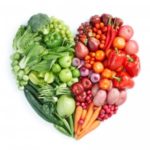The importance of bioavailability
It’s not just the amount of nutrients that a food contains that is important, it’s how bioavailable those nutrients are to the body.
Bioavailability refers to the portion of a nutrient that is absorbed by the body.
The amount of nutrients we absorb from a food is invariably lower than the absolute amount of nutrients the food contains.
The nutrients in some foods are more bioavailable to humans than others. For example, the grass on your front lawn is loaded with vitamins and minerals, but they’re largely inaccessible to humans. Grass contains large amounts of a plant fibre called cellulose, which humans cannot break down. Since we can’t break down the cellulose, we can’t absorb the nutrients grass contains.
On the other hand, nutrients in animal products like fish, meat, poultry, dairy, and eggs are highly bioavailable. This means we can absorb them easily.
The key to nourishing your body, then, is to maximize your intake of bioavailable nutrients. This will ensure that your body has everything it needs to function optimally.
The nutrient density and bioavailability of foods
The table below ranks foods according to their nutrient density and bioavailability.
| HIGH | MEDIUM | LOW |
| Organ meat | Whole grains* | Refined grains (i.e.bread, pasta, crackers, etc.) |
| Meat,wild game and poultry | Legumes* | Sugar |
| Fish and shellfish | Plant fats and oils** | Industrial seed oils |
| Eggs | Animal fats and oils** | Processed food and snacks |
| Fruits | Dairy products | Sugar-sweetened beverages |
| Vegetables | Artificial ingredients | |
| Nuts and seeds* | Alcohol | |
| Herbs and spices | Natural sweeteners | |
* Whole grains, legumes, and nuts and seeds contain substances called “nutrient inhibitors” that impair the absorption of some of the nutrients they contain.
** Plant and animal fats are relatively low in nutrients, but they play other crucial roles, including helping us to absorb the nutrients in other foods.
Looking at the table you might notice several interesting things.
Firstly, all of the most nutrient-dense foods are real, whole foods, and all of the least nutrient-dense foods are processed and refined foods.
Processed and refined foods are destroying our health because they promote overeating and inflammation, and inflammation is at the root of all modern disease. Here we see yet another problem with these foods: they are at the bottom of the scale in terms of nutrient density.
Secondly, you might be surprised to see that organ meats, meat, fish and shellfish are in the highest category of nutrient density. In fact, when the major nutrients required for human function are considered, these foods are even more nutrient-dense than fruits and vegetables.
One serving of beef (about 3.5 ounces) typically contains more B12, niacin (B3), vitamin D, retinol (vitamin A), zinc, iron, potassium, phosphorus, and EPA and DHA than the same amount of blueberries or kale, which are two of the most nutrient dense plant foods. In addition, the nutrients in meat are highly bioavailable when compared to foods like cereal grains, nuts and seeds, and legumes. The bioavailability of zinc, for example, is four times higher in meat than it is in grains.
Thirdly, while neither animal nor plant fats are especially nutrient dense, they do play other important roles in the diet. Perhaps most importantly, they help us to absorb the nutrients that are present in other foods.
Finally, look at where whole grains and legumes are on the table; they’re not the nutritional powerhouses you may have been led to believe they are. Not only do they lack important nutrients, but they also contain substances called “nutrient inhibitors” that make it more difficult for us to absorb some of the nutrients they do contain.
Cultures who ate a lot of grains and legumes went to great lengths to break down these nutrient inhibitors so they could better absorb the nutrients in these foods.
Methods included soaking, sprouting, fermenting, and leavening.
If you have the time and energy to prepare grains and legumes in these ways, and you tolerate them well, there’s no reason they can’t be part of a diet that emphasizes other more nutrient dense foods like meat, fish, eggs, and fruits and vegetables.
Likewise, if you eat nuts and seeds, you should soak and then dehydrate or roast them first in order to increase the bioavailability of the nutrients they contain.
